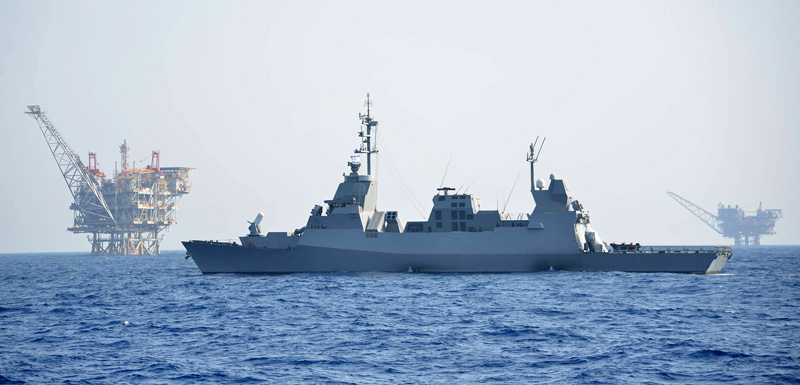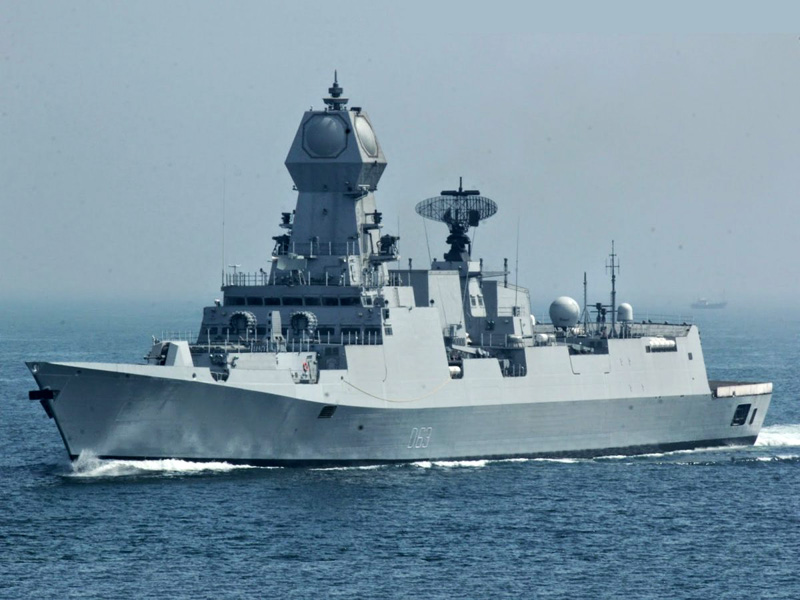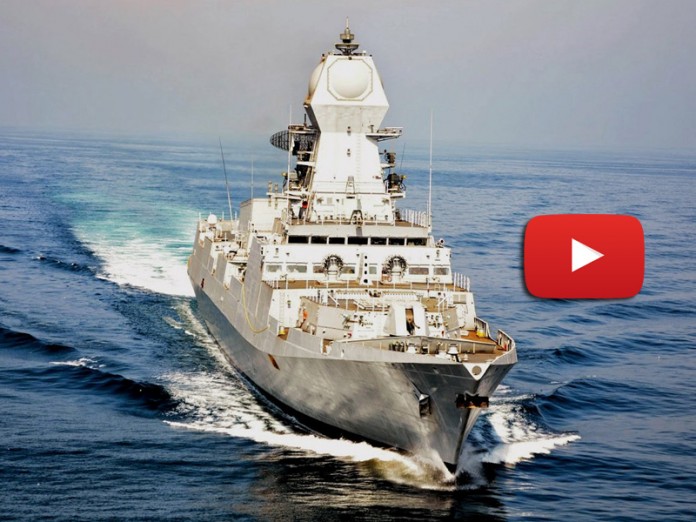
The two countries have teamed to co-develop and market the area defense system which is considered more compact and affordable than comparable naval air defense systems of European and US origin.
Poland considered the acquisition of seven 1,900 ton Gawron class corvettes based on the Meko A-100. This project was cancelled in 2012 over financial constraints but in 2013 it was decided to restart part of the program and complete at least one Gawron hull by 2016. The current plan calls for the maintenance and capability expansion of the current naval force, tasked primarily with coastal defense. Among the platforms considered for this fleet are three 1,900 ton corvettes, which potentially could be candidates for the Indo-Israeli integrated naval air-defense system.
If Poland agrees to the proposal it would become the fourth customer of the system – as the Barak 8 system has already booked multi-billion dollars worth firm orders. Among the launch customers were the Indian and Israel navies, the Indian Air Force and Azeri ministry of defense, which included 75 of the missiles as part of an arms deal worth $1.6 billion signed with Israel in 2011.
Compared to other advanced air defense missile systems, Barak 8 / MRSAM would fit well in new and existing ships, as it comes in a 9” diameter canisters – compared to the 21” standard matching the VL-41 launcher.
The offer comes as the Barak-8 system is moving into the final qualification testing toward the end of 2014, to equip the leading naval vessels of the Israeli and Indian navies.
[ismember]Developed as a collaborative program between Israel Aerospace Industries (IAI) and the Indian Defense Research & Development Organization (DRDO) and was selected for deployment on surface vessels of both countries. The first vessels to get Barak 8 are three Kalkota class destroyers – INS Kolkata, Kochi and Chennai, and three Lahav V corvettes of the Israel Navy – INS Lahav, Haifa and Eilat. The Indian Air Force will also deploy a land-based Barak 8 derivative called LR-SAM, using boosted versions of the missile.
India and Israel have split the initial development cost of the program, estimated at $350 million. The development program has been extended over much longer period than planned, due to complex synchronisation of different development paths allocated during the preliminary workshare. In August 2014 the Indian DRDO confirmed that four rocket motors were dispatched to Israel for integration with the IAI-built front section, prior to the final test of the system planned for the second half of this year.
Tests are likely to be held on board an Israel Navy Eilat Class (Saar 5) corvette that has already been equipped with the EL/M-2248 MF-STAR radar and Barak 8 fire control system. The new radar became operational in the summer of 2014. All three Saar V corvettes will gradually be equipped with the new radar and Barak 8 systems. The smaller, Saar 4.5 class corvettes will be fitted with a rotating variant of the radar designated EL/M-2285 ALPHA, which will also support the Barak 8 installation, alas, with degraded capabilities.[/ismember]
[nonmember]Subscribe now to read the full version[/nonmember]
In Israel, Barak 8 will be deployed on three Eilat class corvettes, the first vessel – INS Lahav has already been equipped with the systems’ MF-STAR (ADIR) multi-functional phased array radar and Barak 8 weapon control system. In India, the lead ship of the Project-15A destroyer INS Kolkata, has been equipped with a wedged dome-shaped MF-STAR on its main mast, along with three 8 stack Barak 8 launchers below deck, each mounting eight missiles. The second and third vessels of this class, INS Kochi and INS Chennai, will also receive the new system.
While parts of the Barak 8 system are already installed on the lead ship of the Project 15A class, INS Kolkata, the 48 canisters installed on the destroyer will remain empty until fully tested missiles are delivered, hopefully by the end of 2015.
The systems will also become standard on the enhanced Kolkata class – Project 15B 7,200 ton vessels. Construction of the lead ship of this class, INS Bengaluru, will begin in 2016. By 2018 LRSAM systems will also be installed on India’s first indigenous aircraft carrier – INS Vikrant

[ismember] Among the improvements considered for these vessels are some structural changes in the superstructure, to improve its stealth performance, include better sound and infrared suppression. The design will employ fully flush deck which will also improve signature reduction. The main improvement in armament will be the integration of the Nirbhay land attack cruise missile, capable of launching conventional or nuclear strike at distances up to 1,000 km, and the hypersonic Brahmos-II anti-ship cruise missile, attacking surface targets at 300 km range. The Bengaluru is expected to be the first to deploy the Extended Range Surface to Air Missile (ER-SAM) offering extended area defense capabilities, increasing intercept range of the missile from the current 75 km to 100 km.
Unlike the current Barak I missile system designed to provide ‘point defense’ to the carrying ship, Barak 8 is able to provide both point defense and area defense, covering a radius of 70 kilometres. As such, one or more vessels carrying Brak 8 missiles can effectively protect entire battle groups or offshore platforms even when the vessel itself is located remotely from the protected area. This capability will provide a critical function in the protection of Israel’s new offshore oil and gas rigs.[/ismember]
These will be the primary requirement for a new class of offshore patrol vessel the Israel Ministry of Defense (IMOD) is requesting from naval shipbuilders. IMOD has recently published an international request for proposal (RFP) for the supply of four such vessels; they are likely to be equipped with air defense systems such as Barak 8, to provide a ‘protective umbrella’ against coastal defense missiles such as the Russian P-800 Yakhont that is likely to be fielded by Hezbollah in Lebanon, or Iranian C-704 thought to be supplied to Hamas in Gaza.
The weapon is optimised to defeat all types of aerial targets, from guided weapons, sea skimming and cruise missiles, including the high supersonic missiles such as the P-800 Yakhont to manned and unmanned aircraft.
[ismember] By 2005 the Indian Navy has deployed Barak I systems on a number of surface vessels including aircraft carrier INS Viraat, two Type 15 Delhi Class destroyers, a Type 16 Godavari Class frigate, three Type 16A Brahmaputra Class frigates and one Rajput (Kashin II) Class destroyer. The second order for 242 has been cleared only recently, after years of delays.
The missiles will be deployed on 14 Indian built and imported surface ships, including the Vikramaditya, which will arm the carrier until the new, Barak 8 systems become available.[/ismember]

[ismember]
[/ismember]

















